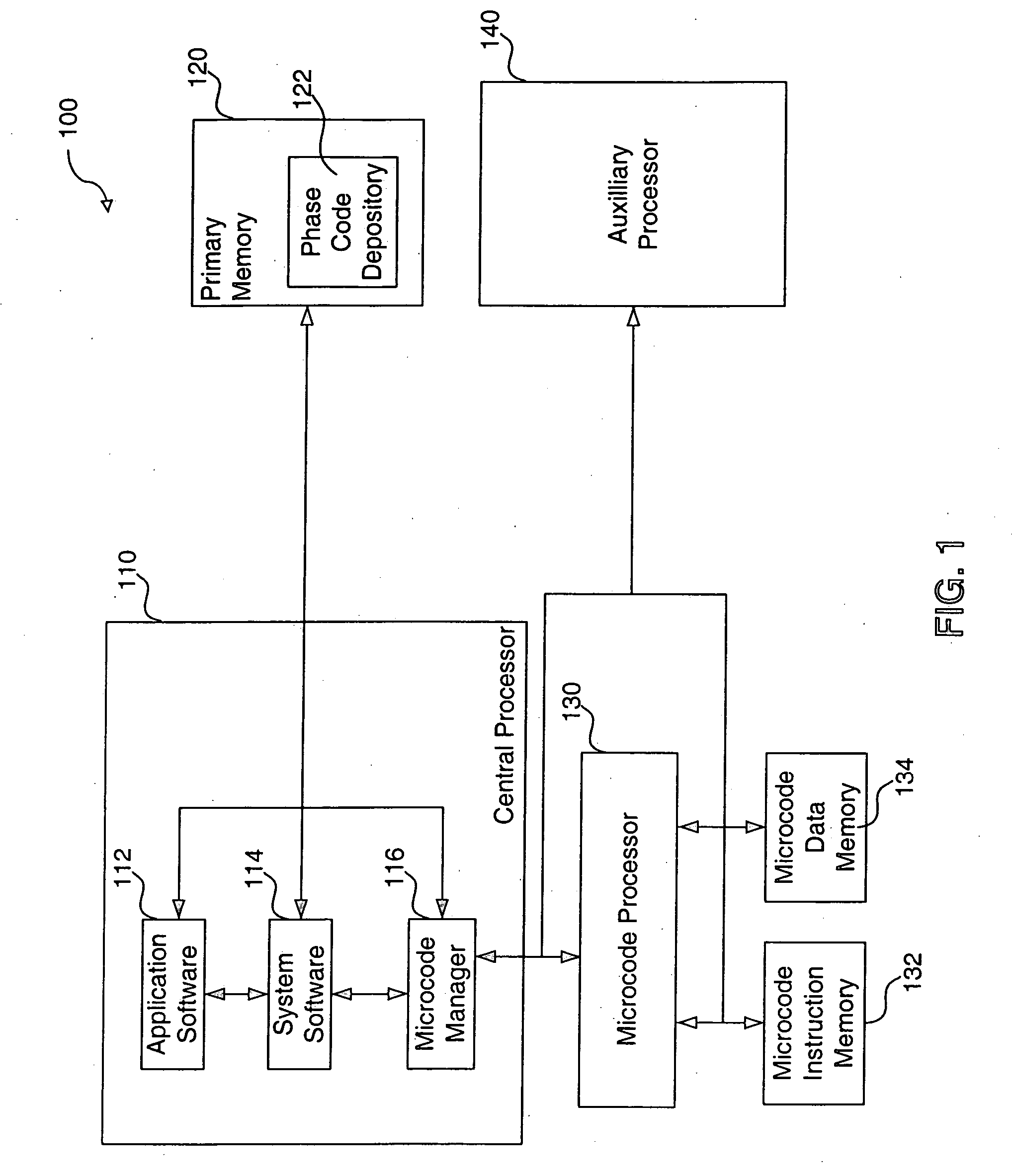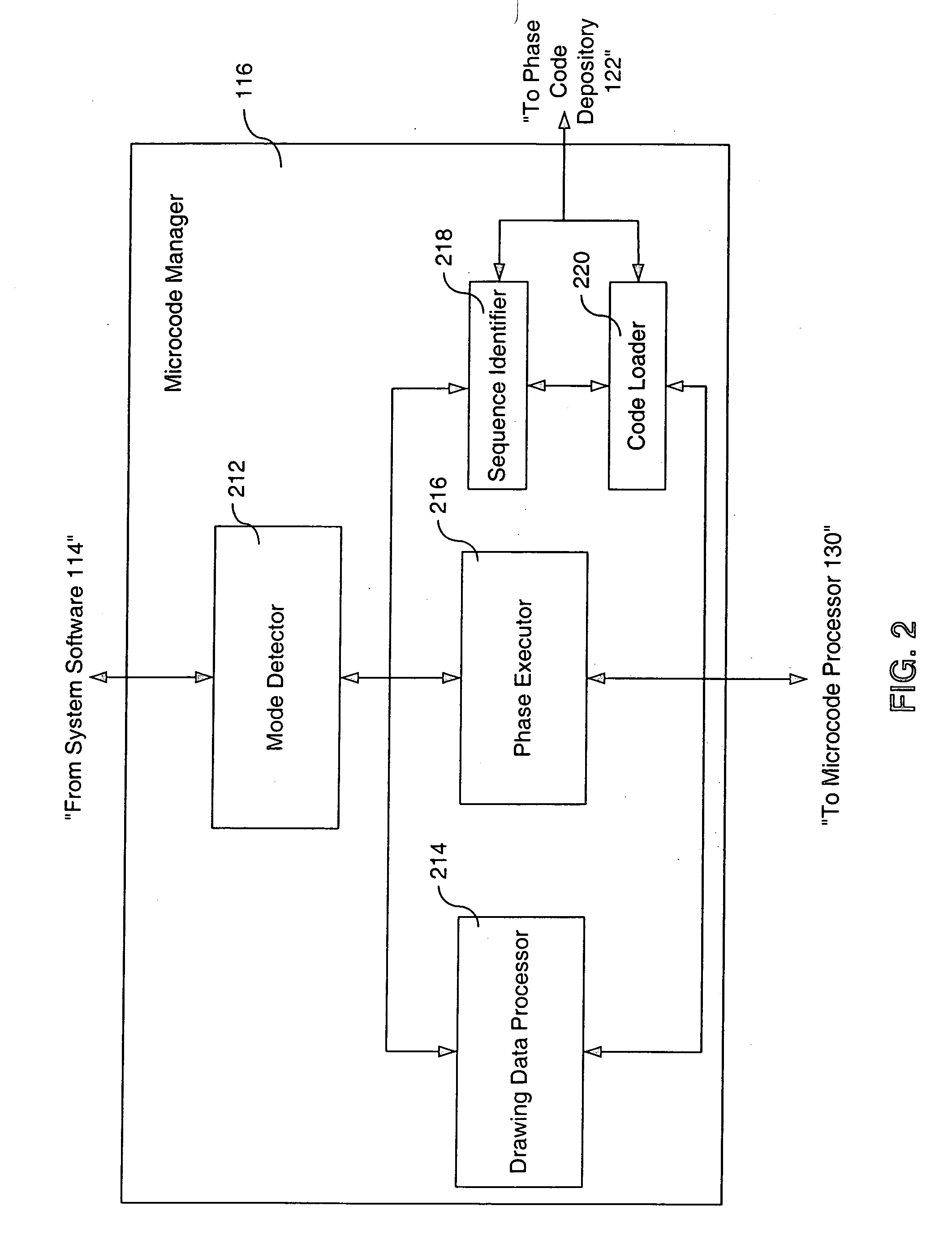Method, system and computer program product for efficiently utilizing limited resources in a graphics device
a graphics device and limited resource technology, applied in image data processing, image data processing details, program control, etc., can solve the problems of extreme complexity in applying tuning techniques to maintain reasonable processing requirements for real time environments, limited random access memory (ram) capacity of microcode engines, and insufficient microcode memory space to have monolithic tuned rendering microcode, etc., to achieve the effect of expanding the capabilities of graphics software, saving limited memory, and improving performan
- Summary
- Abstract
- Description
- Claims
- Application Information
AI Technical Summary
Benefits of technology
Problems solved by technology
Method used
Image
Examples
Embodiment Construction
Table of Contents
I. Overview of Microcode Management System
II. Microcode Management
III. Phase Module Sequencing
IV. Phase Module Attributes
V. System Operation
VI. Software and Hardware Embodiments
VII. Conclusion
I. Overview of Microcode Management System
[0023]FIG. 1 illustrates, according to an embodiment of the present invention, a block diagram of a microcode management system 100. As shown, microcode management system 100 includes a central processor 110, primary memory 120, microcode processor 130, microcode instruction memory 132, microcode data memory 134, and auxiliary processor 140. Central processor 110, microcode processor 130, and auxiliary processor 140 represent any commonly known or future-developed computer processor. Central processor 110 can be any processor developed by Intel Corporation, Advanced Micro Devices, Inc. (AMD), API NetWorks (Alpha), ARM Ltd., MIPS Technologies, Inc, or the like. In an embodiment, central processor 110 is the Emotion engin...
PUM
 Login to View More
Login to View More Abstract
Description
Claims
Application Information
 Login to View More
Login to View More - R&D
- Intellectual Property
- Life Sciences
- Materials
- Tech Scout
- Unparalleled Data Quality
- Higher Quality Content
- 60% Fewer Hallucinations
Browse by: Latest US Patents, China's latest patents, Technical Efficacy Thesaurus, Application Domain, Technology Topic, Popular Technical Reports.
© 2025 PatSnap. All rights reserved.Legal|Privacy policy|Modern Slavery Act Transparency Statement|Sitemap|About US| Contact US: help@patsnap.com



